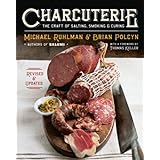By pink salt, I assume you are referring to Prague powder #1 and not something like Himalayan Pink Salt or Hawaiian Pink Salt?
If it is a curing salt, that's 6 tsp, 200% more than what was called for.... If it is a wet cure (submerged in curing brine) you can adjust the water for proper dilution, if it's a dry curing in a bag, I personally wouldn't use it.
But more importantly pink salt should be weighed and calculated according to the weight of the meat. A reliable recipe, from experience, will always weigh the ingredients of the cure, salt, and sugar for accuracy, consistency, and for safety.
If you're really interested in curing meats, then invest in one of these recommended books for sausage making and curing meats....
I would suggest doing some reading before you make the leap so you have an understanding of some of the processes...... It is important that you follow the recipe using exact amounts as well as the proper procedures to maintain a safe meat product. When in doubt read and read again, and ask questions if you need to.
There are many great books and guides on curing and sausage making. I am sure almost everyone who posts may have a few recommendations for books on sausage making. These are by far the best books for basic and advanced sausage making. They start with the basics and move forward to help you master the craft of sausage making. Contains true recipes before the use of chemical enhancers/additives, and fillers were added to stretch the amount of commercial production.
While there are many books out there that all contain enough information to get you off to a good start, there are a few books that I would highly recommend.
First Recommendation..
Home Production of Quality Meats and Sausages by Stanley Marianski and Adam Marianski
This is a book that covers everything from making a smokehouse, to curing meats, and making sausage. Very easy to read with a great collection of recipes and techniques for the beginner. This book is actually two other books ("Meat Smoking And Smokehouse Design" and "Polish Sausages, Authentic Recipes And Instructions") combined into one single book plus more on making sausage and curing meats. Most are simple one Kilogram recipes, so you can make a small batch of the product before deciding to make a large batch. This also makes it easier to make a larger batches with easy multiples. The use of a metric scale in sausage making and curing makes the process much more accurate and provides a consistent product time after time.
Second Recommendation..
Great Sausage Recipes and Meat Curing by Rytek Kutas and Ben Kutas
This is often called the definitive book on sausage making. The explanation of how cures work, and what they are for, just this understanding to a beginner is worth the price of the book. However the smallest quantity the recipes is for ten pounds, so a beginner will have to properly calculate and scale down the recipes. The book is equally helpful to the beginner or the advanced. Some of the recipes are a little too salty for my taste, but I just make a note and reduce the salt in the next batch. The book also contains a some stories that are entertaining. *** DO NOT BUY THE BOOK / DVD COMBO, in my opinion the DVD is worthless even to a beginner, but that's just my personal opinion.
Third Recommendation..
Charcuterie: The Craft of Salting, Smoking, and Curing by Michael Ruhlman and Brian Polcyn
This is a great book, although it lightly touches the basics, I feel the book is more for an intermediate or advanced sausage maker. Most recipes are in five pound batches, but I suggest you scale them down to try them before making a large batch. You'll find that you will have to tweak a lot of the recipes to your individual liking / tastes. This book takes sausage to the next level with using some top shelf ingredients as well as some hard to find ingredients to make sausages that could be considered in the "gourmet" classification. Michael Ruhlman has many proven recipes, but you must have an understanding of the basics before you try to get into the gourmet type recipes contained herein.
Also keep in mind that there are many great resources on the World-Wide-Web (Internet), but reference books are always good for checking factual information when in doubt.
I would stress to all beginners to use only a tested and proven recipe from a reliable source, there are many recipes I have found on the Internet that I would have concerns about. Just because it's out there doesn't mean it is correct. Also the use of an electronic scale that also has a metric mode is an invaluable must have. The weighing of the cure is critical to food safety, so if everything is properly weighed and not measured, you will have a great product in the end.
Here is a brief guide to what basics are needed to make your own sausage.
http://www.lets-make-sausage.com/Sausage-making-equipment.html
Resources for tested recipes:
The Marianskis have a website which is another great resource:
http://www.meatsandsausages.com/
Len Paoli's Recipe site
http://lpoli.50webs.com/Sausage recipes.htm
The Spicy Sausage
http://thespicysausage.com/sausagemakingrecipes.htm
Sausage Mania
http://www.sausagemania.com/tutorial.html
Lets Make Sausage
http://www.lets-make-sausage.com/Sausage-making-equipment.html
Sausage Making Org
http://forum.sausagemaking.org/
Northwest Smoking
http://web.archive.org/web/20010214020112/http:/home.att.net/~g.m.fowler/frame/Sausage1.htm
and so many more....



